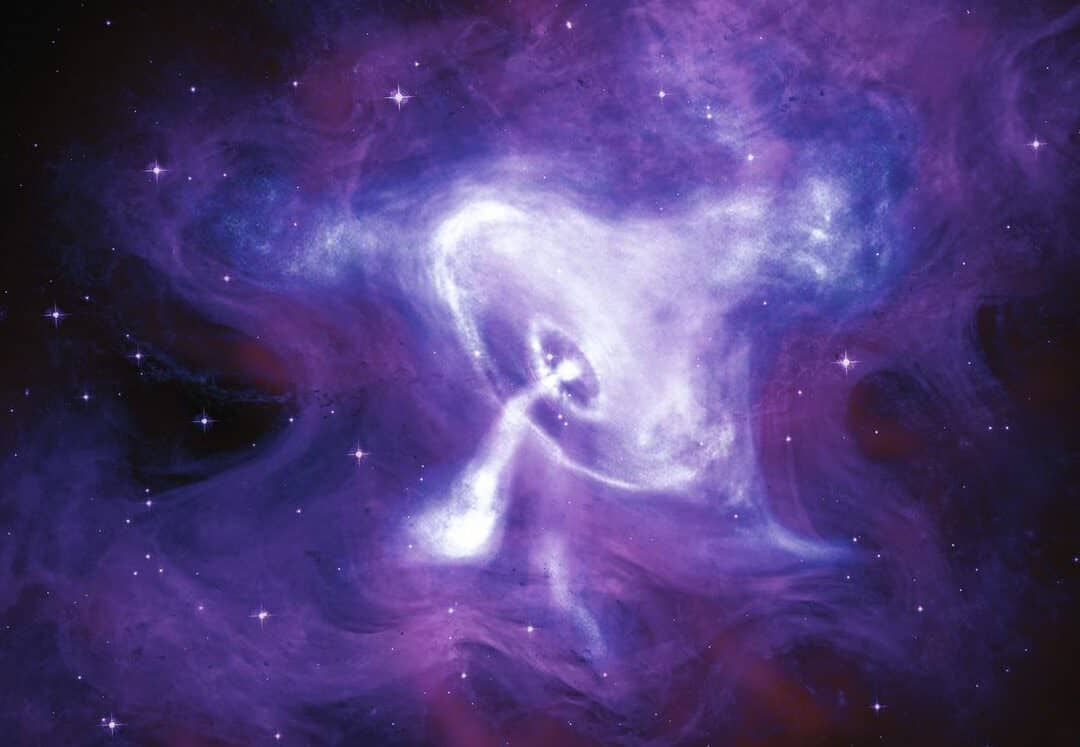
In fact, supernovae are celestial bodies that undergo a violent eruption, causing their brightness to rapidly intensify and then gradually diminish. It’s incredible to think that their luminosity can increase by 10 to 20 magnitudes.
However, a supernova explosion represents the very phenomenon of a sudden surge in stellar luminosity followed by a gradual decline.
Interestingly, such an event occurs during the final stage of evolution for certain objects, resulting in a cataclysmic release of a tremendous amount of energy into the surrounding interstellar space.
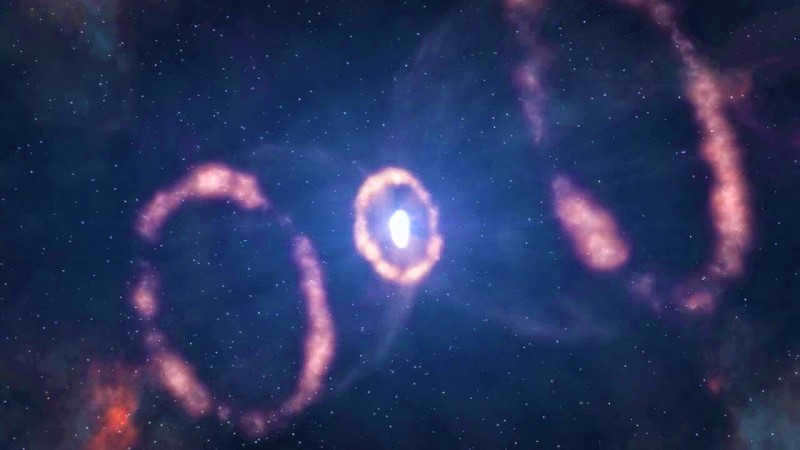
What Causes New Supernovae to Form
Scientists believe that new supernovae form when there is a rapid increase in the mass of matter involved in thermonuclear reactions inside a star. In simpler terms, an explosion occurs. However, this phenomenon only happens in certain star systems. For instance, a main sequence star (with its processes) is in a state of equilibrium and cannot trigger such an explosion.
Interestingly, the explosion of a supernova possesses a distinct characteristic compared to other eruptions.
It appears that their spectra lack hydrogen lines, suggesting a scarcity of this element in these celestial bodies prior to the eruption. However, they generate a substantial amount of matter, primarily composed of carbon, oxygen, and other heavy elements.
Furthermore, spectral analysis reveals a displacement in the silicon line, indicating the occurrence of nuclear reactions during the ejection.
Therefore, the hypothesis suggests that the supernova was once a dwarf, possibly a white carbon-oxygen representative.
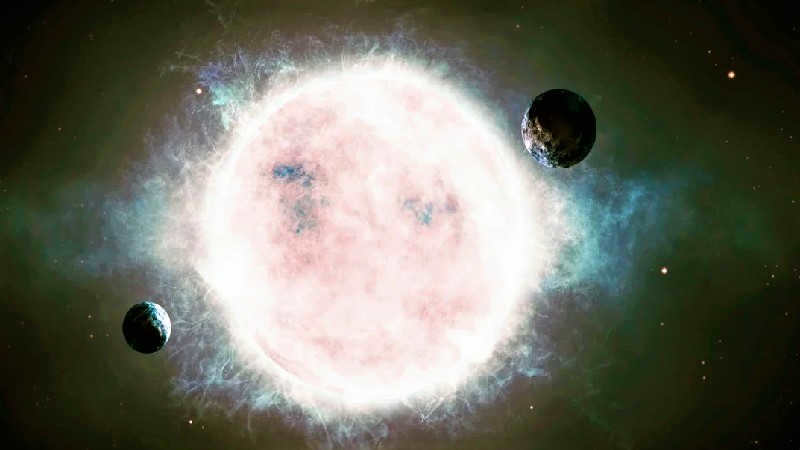
Categories of supernovae
It is important to mention that the categorization of supernovae begins with the type (SN) and the year of discovery, and ends with letters indicating the sequential number of the object within that year. For example, they are initially designated from A to Z, and then aa, ab, ac, and so on.
Naturally, members of the same category can never be completely identical. They have differences. Primarily, their brightness and the manner in which they form vary.
Therefore, two categories are distinguished:
Type I: in a binary system (consisting of a white dwarf and a more massive companion), matter transfers to the dwarf component. This leads to an explosion, compression, and the creation of a neutron star.
It’s worth noting that their spectrum does not contain any hydrogen. Based on their composition, they are classified into subtypes Ia, Ib, and Ic.
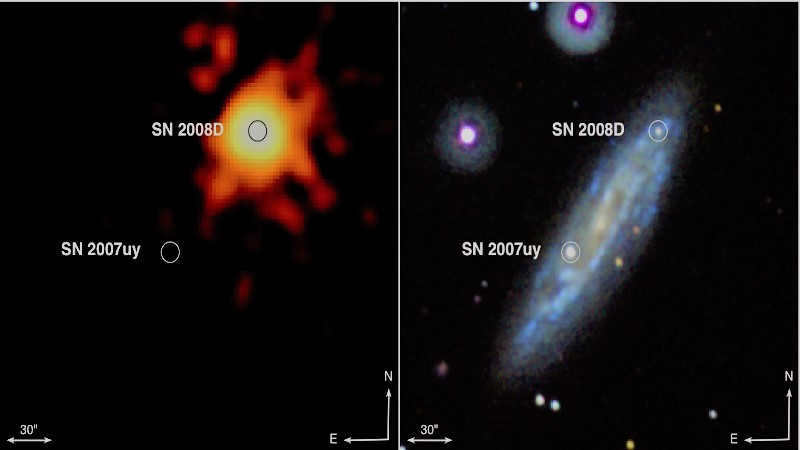
Furthermore, the duration of the peak luminosity period is approximately two to three days. However, it is worth noting that the level of brightness is exceptionally high.
Type II: A massive giant or supergiant star undergoes a cataclysmic explosion, causing its core to collapse. As a result, its constituent elements rapidly disperse in various directions.
Nevertheless, these objects exhibit hydrogen lines in their spectra. They are further classified into subtypes: II-L, II-P, IIb, and IIn.
Moreover, the second type of supernova is characterized by a more prolonged period of increasing brightness. However, the overall brightness is lower and decreases at a faster rate compared to the first type.
It is fascinating that these objects are detected only after the explosion occurs, once the energy they release, known as radiation, reaches the Earth’s atmosphere. This is the moment when they become observable.
Indeed, this is why objects such as supernovae have remained enigmatic and puzzling for a significant period of time.
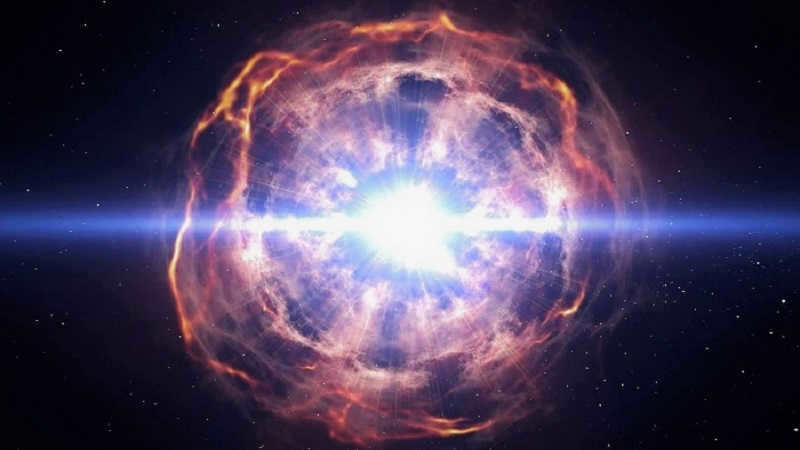
What is left behind after a supernova explosion
Interestingly, when a star explodes, it leaves behind a mixture of gas and dust, as well as remnants of the materials it once contained. This aftermath is known as a supernova remnant.
In simpler terms, a supernova remnant is the collection of nebulae that forms after a star explodes and becomes a supernova. As the outer shell of the star bursts, its particles scatter and create a shockwave. This shockwave rapidly expands and forms a region filled with gas and dust. Within this region, there is a combination of stellar material and matter from outer space that was brought together by the shockwave.
Naturally, the remnant is not immediately visible but becomes observable over time. In some cases, it may take hundreds of years before it becomes visible.
Supernovae stars and some examples
There are several well-known representatives that can be distinguished: SN 1572 (also known as the Tycho Brahe star because it was described by Tycho Brahe), SN 1604, SN 1987A, and SN 1993J.
For instance, among this category of celestial bodies, the most brilliant one of the previous century is recognized as SN 1987A, and the current century’s frontrunner is SN 2006gy.
By the way, the famous Crab Nebula is the remains of SN 1054.
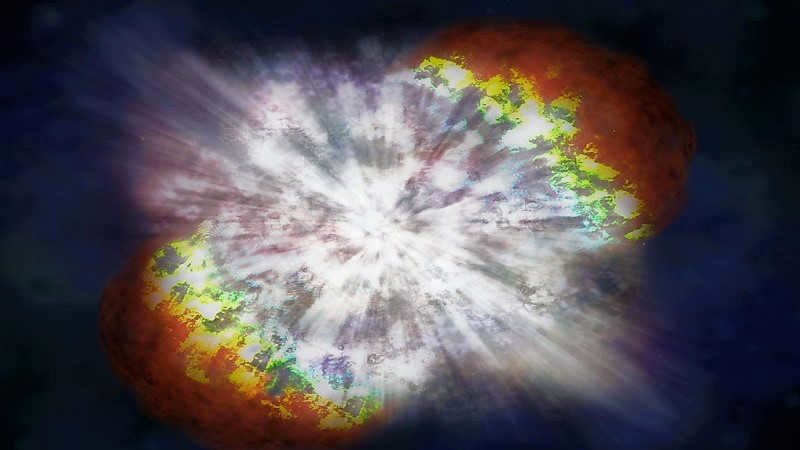
What role do supernovae play in the universe?
Supernovae play a crucial role in the chemical evolution of galaxies and the entire universe.
It’s important to remember that throughout their lifespan, which spans thousands of years, nuclear reactions occur within these celestial bodies. During this time, fusion products accumulate within them.
We now understand that when a star explodes, it releases matter and energy into space. Essentially, everything that has been accumulated dissipates into the surrounding region. As a result, the region becomes enriched with chemical elements, ultimately driving the evolution of our universe.
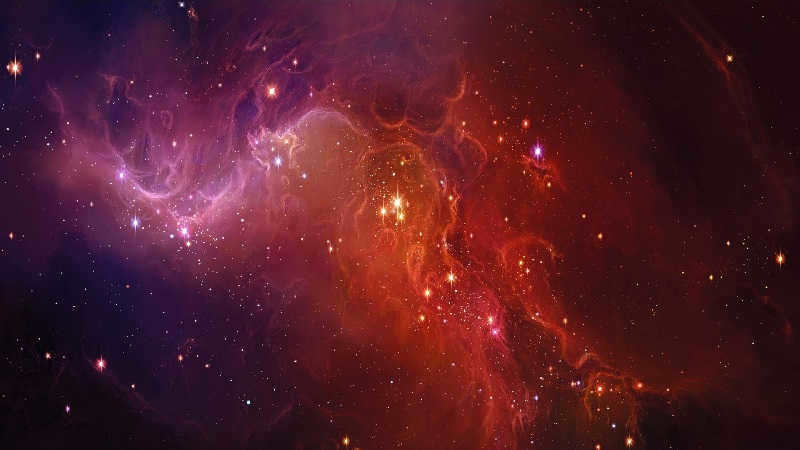
Ultimately, the utmost brightness of a supernova can serve as a benchmark. In other words, it can be utilized to determine the distances between celestial entities. Additionally, with the aid of cutting-edge telescopes, it is now feasible to observe supernovae in nearby galaxies. This unquestionably represents a significant advancement in the examination and investigation of the cosmos.
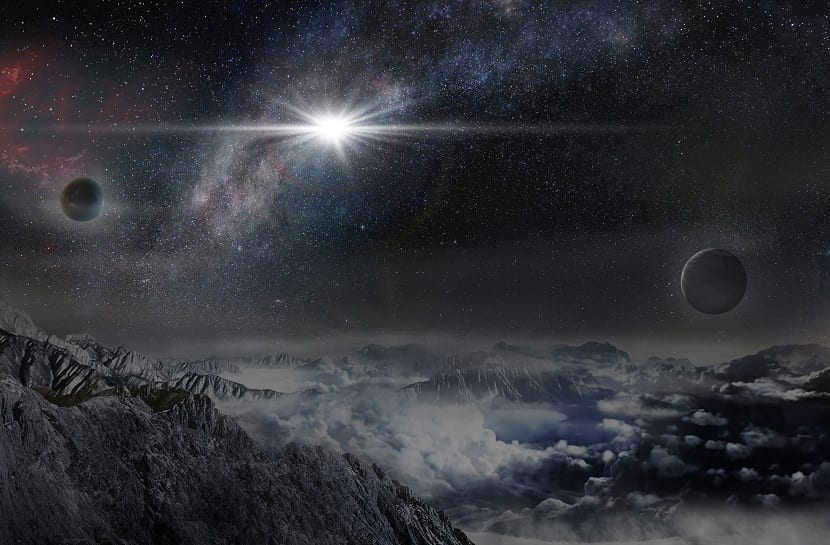
In the vast expanse of the Universe, celestial objects also experience a form of mortality, for they are not eternal. The stars that grace our night sky have their own end. This demise comes in the form of a powerful phenomenon known as a supernova. Today, we will delve into the intricacies of what constitutes a supernova, how it originates, and the profound implications it has on the cosmic landscape.
If you are eager to expand your knowledge on the subject of supernovae, this article is a must-read.
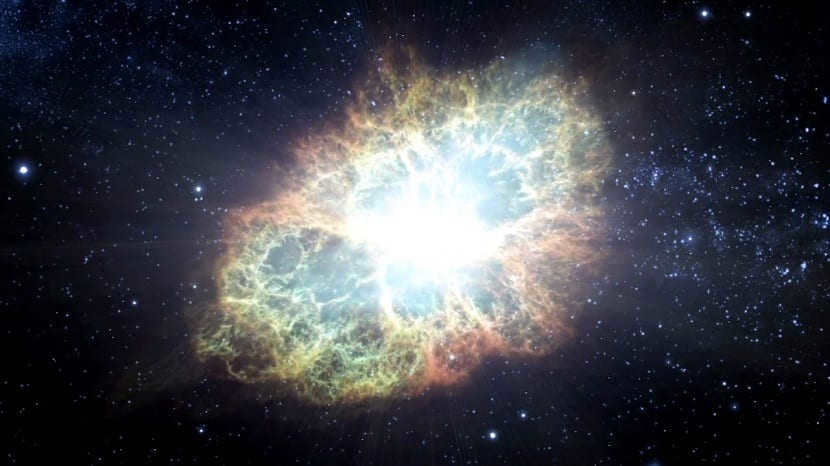
All of these supernova stars were born in 1604 when astronomer Johannes Kepler spotted a new star in the constellation of Serpens. Although it was only visible for 18 months, it was later discovered that Kepler had actually witnessed a supernova. Nowadays, we have a clear understanding of what supernovae are and how they appear in the sky. One example is the supernova star Casiopea.
The fact is that a supernova is simply the explosion of a star that occurs at the end of its life cycle. These explosions propel all the matter contained in the star in various directions. Scientists have always been curious about why stars explode in this manner when they are already in the process of dying. It is understood that a star explodes when it exhausts its fuel, which generates energy in the star’s core. This creates a radiation pressure that constantly opposes the star’s collapse, but eventually gravity takes over.
When this happens, unstable remnants are formed due to gravity, which never ceases. Ultimately, like many things on Earth that rely on fuel, the same fate befalls a star. Without the fuel that sustains it, it can no longer illuminate the sky.
There are two categories of supernovae: those that originate from stars with a mass 10 times greater than that of the Sun, and those that come from less massive stars. Stars that weigh 10 times more than the Sun are referred to as massive stars. When these stars reach the end of their lives, they generate significantly larger supernovae. Following the explosion, they can give rise to a stellar remnant, which may take the form of either a neutron star or a black hole.
The process by which stars function
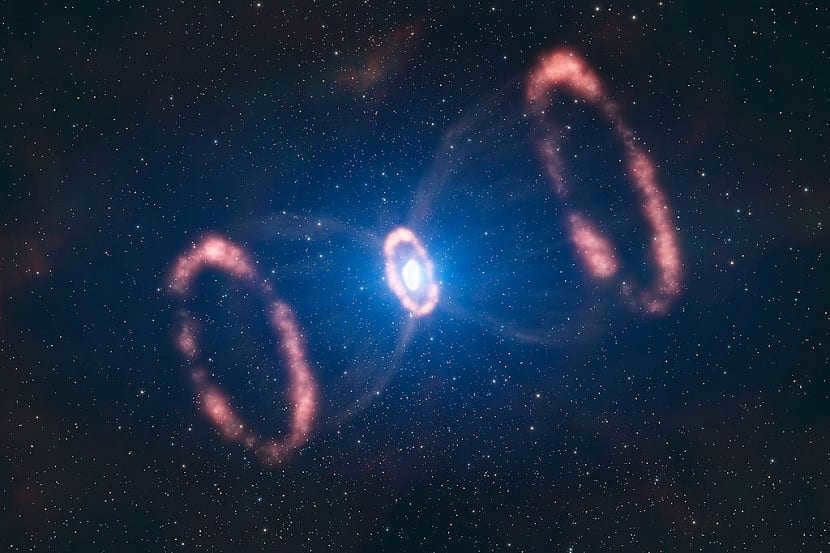
There exists an alternative mechanism, distinct from the explosion of a star, that triggers a supernova event. It is referred to as the cannibal mechanism. This mechanism leads to the formation of a supernova star wherein the white dwarf consumes its companion, metaphorically speaking. This phenomenon necessitates the presence of a binary system. The peculiarity lies in the fact that the white dwarf cannot detonate, but rather it gradually loses its energy and shrinks in size. Consequently, it becomes less radiant.
Therefore, for a supernova to be born, a double system is necessary, where one white dwarf can merge with another. Alternatively, it is possible that a star in the final stage of its evolution devours its companion. In the case of these binary systems, the dying white dwarf must accrete matter from its partner until it reaches a certain mass. Typically, this mass is limited to 1.4 times the mass of the Sun. When this limit, known as the Chandrasekhar limit, is reached, the high density and rapid compression inside the white dwarf cause the ignition of the thermonuclear fuel that triggers the supernova. This fuel is essentially a dense mixture of carbon and oxygen.
The only way to accomplish this is for a different star to transfer mass to it, and this can only occur in a binary system. In such an event, the dying star undergoes an explosion, annihilating itself and its companion, leaving no survivors. This was precisely the occurrence in 1604 involving Kepler’s star.
Following these explosions in binary systems, only remnants of dust and gas persist. In certain instances, it is conceivable for a companion star, having possibly shifted from its initial position, to survive due to the immense shock wave generated by the explosion.
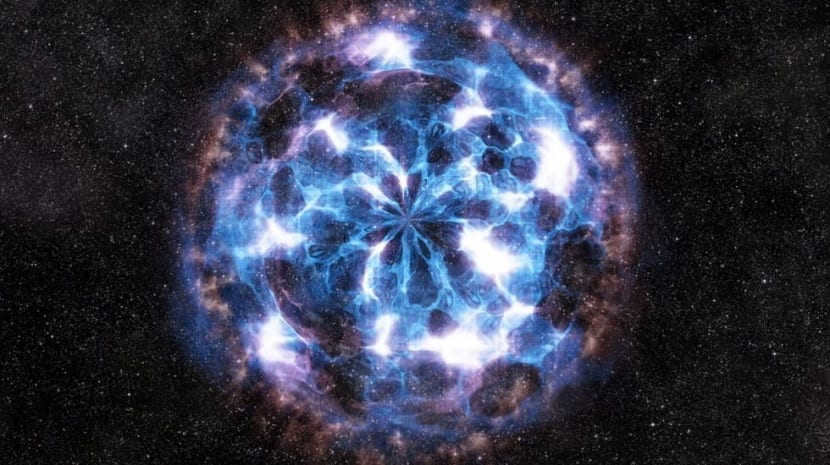
As we have mentioned multiple times in this article, Kepler had the opportunity to witness a supernova in the sky in 1604. Of course, back then, he didn’t fully comprehend the significance of what he was witnessing. With the advancements in technology today, we now possess more advanced and effective instruments for measuring and observing, allowing some of us to even observe starbursts beyond the boundaries of our own galaxy, the Milky Way.
These explosive stellar events have been recorded throughout history and have been observed from our planet. These supernovae appeared as if they were brand new celestial objects, and their luminosity would dramatically increase. This continued until they became the brightest objects in the sky. Just imagine, day after day, observing the vast Universe and then suddenly, one day, you spot an incredibly bright object in the sky. It is highly likely that it is a supernova.
A supernova that was observed by Kepler is well-known. It had a brightness greater than that of planets in our solar system like Jupiter and Mars, but smaller than Venus. It should be noted that the brightness of a supernova is less than that of the Sun and Moon. Additionally, the speed at which light reaches Earth and the distance at which the supernova occurs must be considered. If this explosion happens outside of the Milky Way, it is likely that we are witnessing an explosion that has already happened, but it takes longer to reach us due to the distance.
With this information, I hope you can gain a better understanding of supernovae.
The content of this article adheres to our editorial ethics guidelines. To report an error, please click here.
Full Article Summary: Network Meteorology ” astronomy ” Supernova star
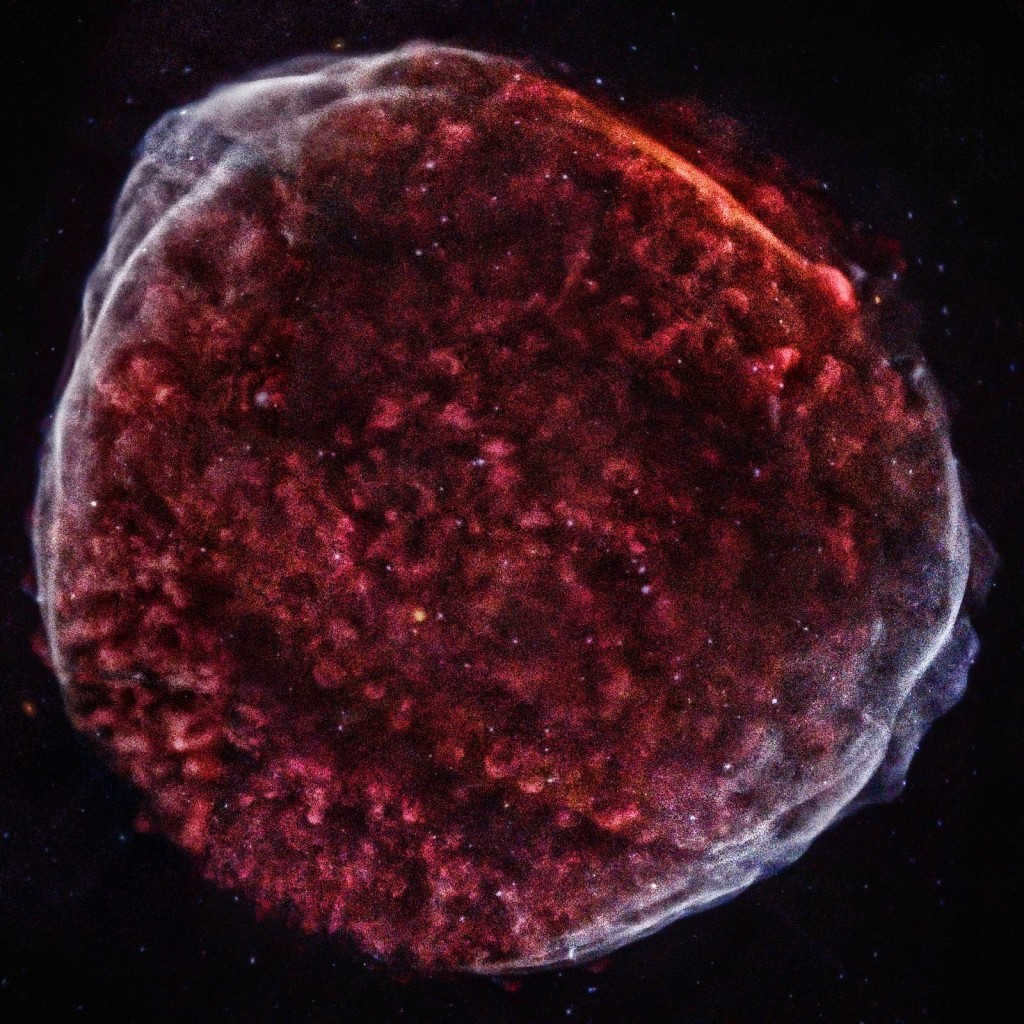
What is your knowledge regarding supernovae? You might respond that a supernova is a tremendous detonation of a star that results in the formation of a neutron star or a black hole.
It’s more than just stellar explosions
However, not all supernovae signify the ultimate phase in the existence of massive stars. According to the contemporary classification of supernova explosions, there are other phenomena included besides supergiant explosions.
Novelty and exploding stars
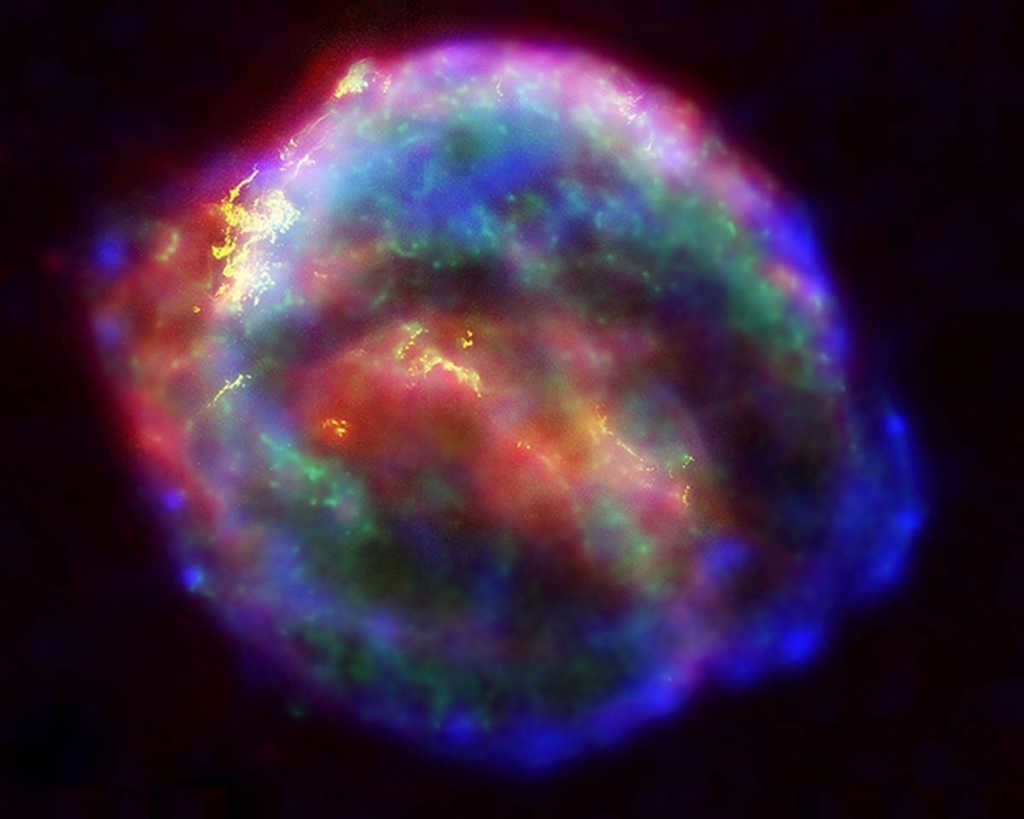
SN 1604 also known as Kepler’s Supernova.
The term “supernova” originated from the term “new star”. “New” stars were stars that appeared in the sky in relatively empty space and gradually faded away. The earliest records of these “new” stars can be found in Chinese chronicles dating back to the second millennium BC. Interestingly, many of these “new” stars were actually supernovae. One notable example is the supernova observed in 1571 by Tycho Brahe, who later coined the term “new star”. Nowadays, we understand that in both cases, we are not referring to the actual birth of new stars.
Although these phenomena are similar, there is now a distinct contrast in how they are defined. The peak brightness of supernovae is significantly higher, measuring in the thousands and even hundreds of thousands of times greater than the peak brightness of newly formed stars. This divergence can be attributed to the fundamentally contrasting nature of these events.
The emergence of fresh stars
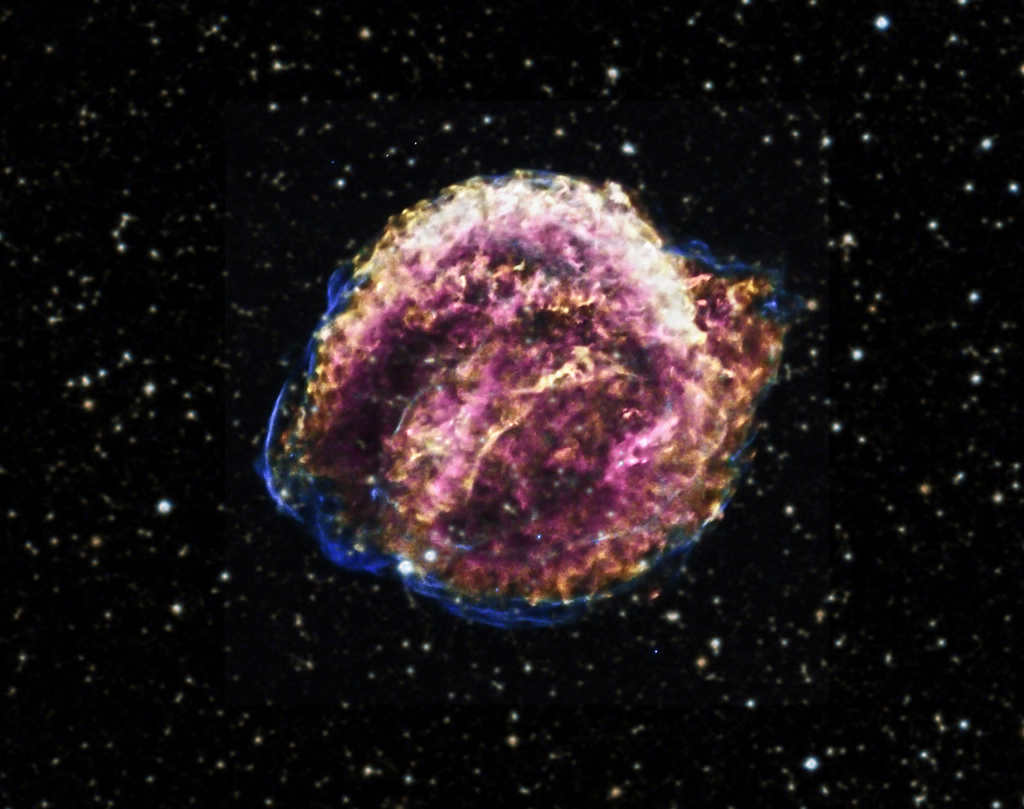
In the year 1604, a powerful explosion known as a supernova occurred.
There are new bursts of energy called flares that happen in certain close stellar systems. These systems consist of a white dwarf and a larger star that could be a main-sequence star, a subgiant, or a giant. The intense gravitational pull of the white dwarf draws in matter from its companion star, causing an accretion disk to form around it. Sometimes, the thermonuclear reactions happening in this disk become unstable and result in explosive events.
Supernova explosions have an entirely distinct and varied origin.
Supernovae Classification
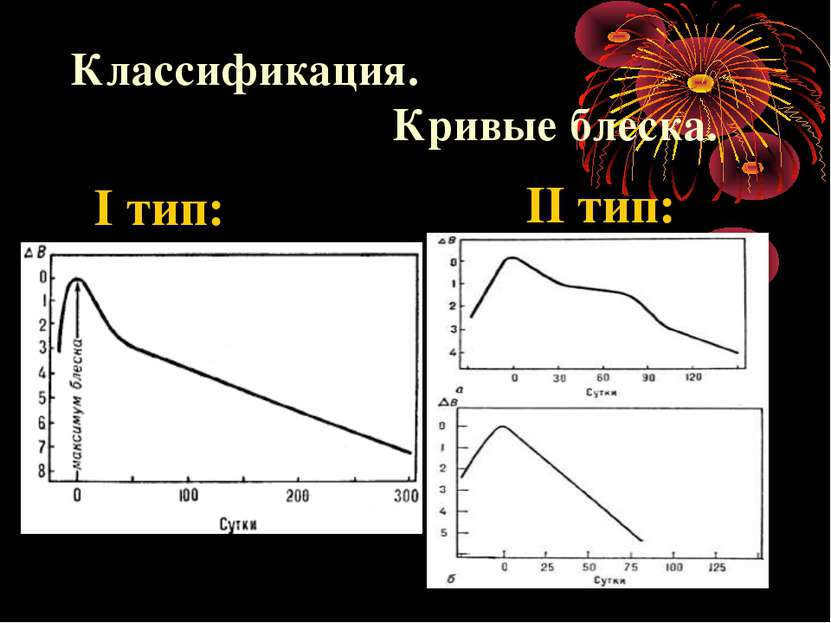
Supernovae can be classified into two primary categories (I and II). These categories can be referred to as spectral classifications since they are characterized by the presence or absence of hydrogen lines in their spectra. Additionally, these categories exhibit noticeable visual differences. All supernovae in Class I share similarities in terms of their explosive power and the way their brightness changes. On the other hand, Class II supernovae are quite varied in this regard. The magnitude of their explosion and the dynamics of their luminosity change can vary greatly.
All Class II supernovae are the result of gravitational collapse within massive stars. In other words, they are the familiar explosions we associate with supergiants. Within the Class I supernovae category, there are some that have a similar explosion mechanism to that of new stars.
The demise of supergiants
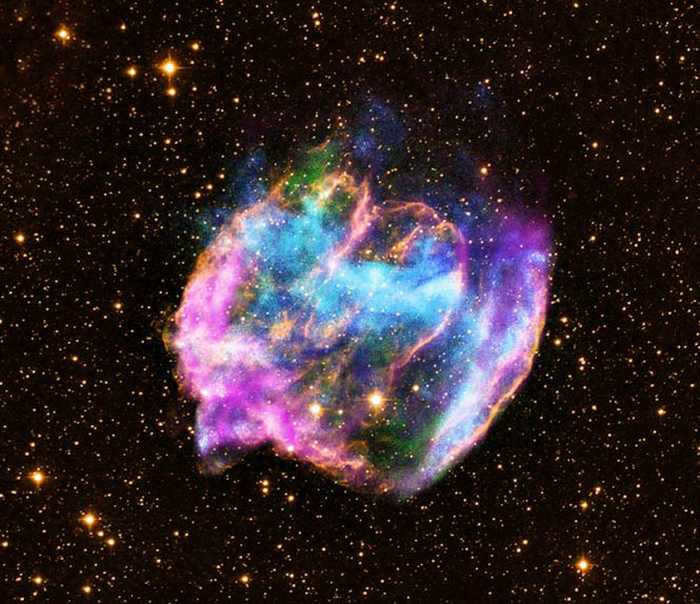
The remains of the W49B supernova
Stars with masses greater than 8-10 times that of the sun undergo supernovae. The cores of these stars, once they have depleted their hydrogen, transition to thermonuclear reactions involving helium. After the helium is depleted, the core proceeds to synthesize even heavier elements. This process creates multiple layers within the star, each undergoing its own type of thermonuclear fusion. In its final stages of evolution, the star transforms into a “layered” supergiant. Iron fusion occurs in its core, while closer to the surface, helium fusion from hydrogen continues.
Differences in social classes
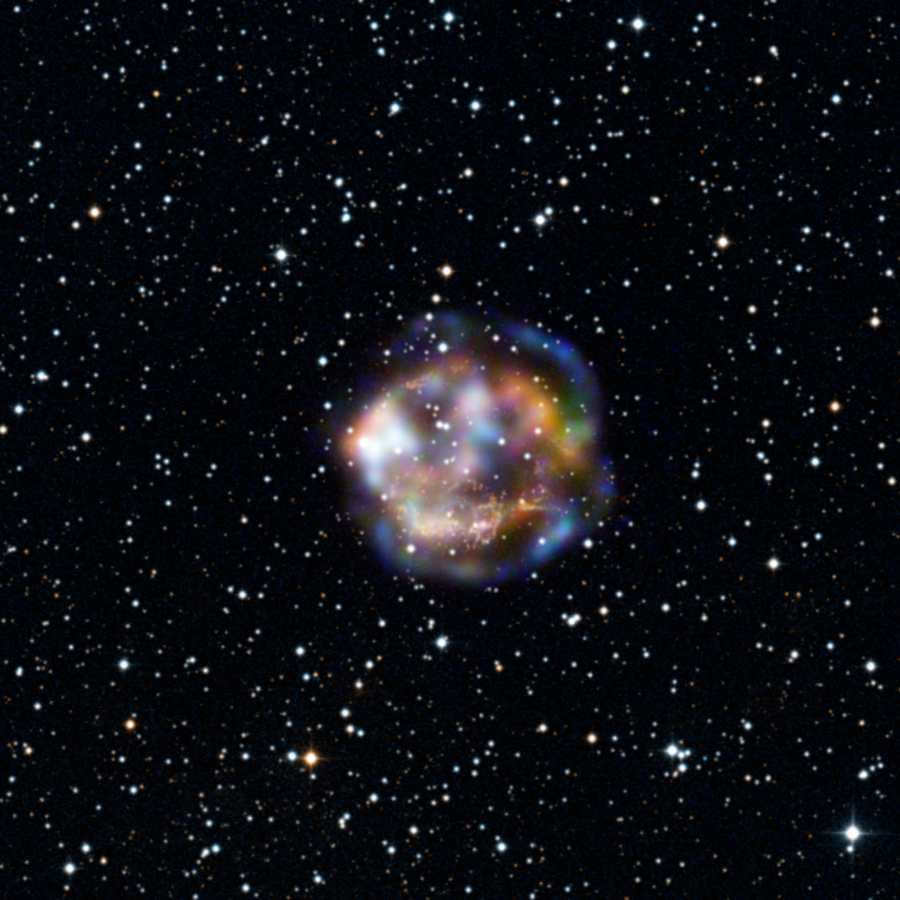
The remnants of the Cassiopeia A supernova are a fascinating subject of study.
The various categories and subcategories of supernovae can be explained by the characteristics of the star prior to its explosion. For instance, the absence of hydrogen in Class I supernovae (subclasses Ib, Ic) can be attributed to the fact that the star itself lacked hydrogen. It is likely that a portion of its outer layer was lost during its evolution in a close binary system. The spectrum of the Ic subclass is distinct from that of Ib due to the lack of helium.
Supernovae in stars lacking an outer hydrogen-helium envelope occur in stars where the other layers are constrained by specific size and mass limits. This is due to the successive occurrence of thermonuclear reactions once a critical stage is reached. As a result, the explosions of class Ic and Ib stars exhibit similar characteristics. Their peak luminosity is approximately 1.5 billion times greater than that of the Sun, which they achieve within a span of 2-3 days. Subsequently, their luminosity diminishes by a factor of 5-7 over the course of a month and gradually decreases further in the subsequent months.
Stars that undergo Type II supernovae have a shell made up of hydrogen and helium. The boundaries of this shell can vary depending on the star’s mass and other characteristics, resulting in a wide range of supernova types. The brightness of these supernovae can range from tens of millions to tens of billions of times the luminosity of our Sun (excluding gamma-ray bursts). Furthermore, the changes in brightness occur in a distinct manner.
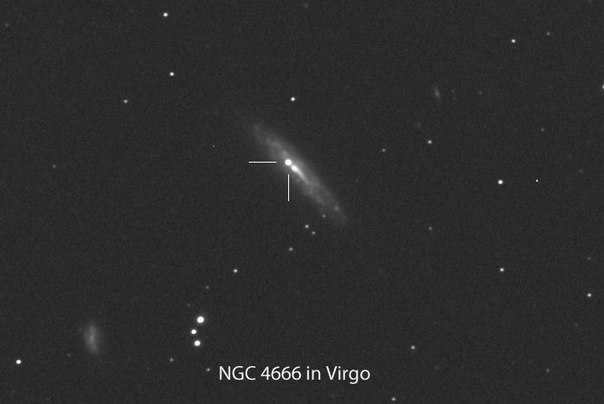
A unique type of supernovae is known as class Ia flares. These particular supernovae can only be observed in elliptical galaxies. This observation implies that these outbursts are not caused by the death of supergiant stars. Supergiants do not live long enough to witness their galaxies transition into an elliptical shape. Additionally, all flares in this category exhibit a nearly identical brightness. This characteristic makes Type Ia supernovae the “standard candles” of the Universe.
They arise through a distinctively different process. As mentioned earlier, these explosions bear some resemblance to novae. One theory of their origin proposes that they also originate in a close system consisting of a white dwarf and its companion star. However, unlike novae, a different, more catastrophic type of detonation occurs in this scenario.
As the white dwarf consumes its companion, it grows in size until it reaches the Chandrasekar limit. This limit, which is approximately 1.38 times the mass of the Sun, represents the maximum mass a white dwarf can reach before it becomes a neutron star. This transition is accompanied by a powerful thermonuclear explosion, releasing an immense amount of energy that is many orders of magnitude greater than a typical nova explosion. The nearly constant value of the Chandrasekar limit explains the relatively small variation in brightness among flares in this subclass. These flares can have a brightness that is approximately 6 billion times greater than the luminosity of the Sun, and their behavior is similar to that of supernovae in the Ib and Ic classes.
Explosions of Hypernovae
Hypernovae are explosions with energy levels that are significantly higher than those of typical supernovae. In other words, hypernovae are essentially extremely bright supernovae.
Typically, hypernovae are believed to be the result of the explosion of supermassive stars, which are also known as hypergiants. These stars have a mass starting from 80 solar masses and often exceed the theoretical limit of 150 solar masses. There are also theories suggesting that hypernovae can be formed through antimatter annihilation, the formation of quark stars, or the collision of two massive stars.
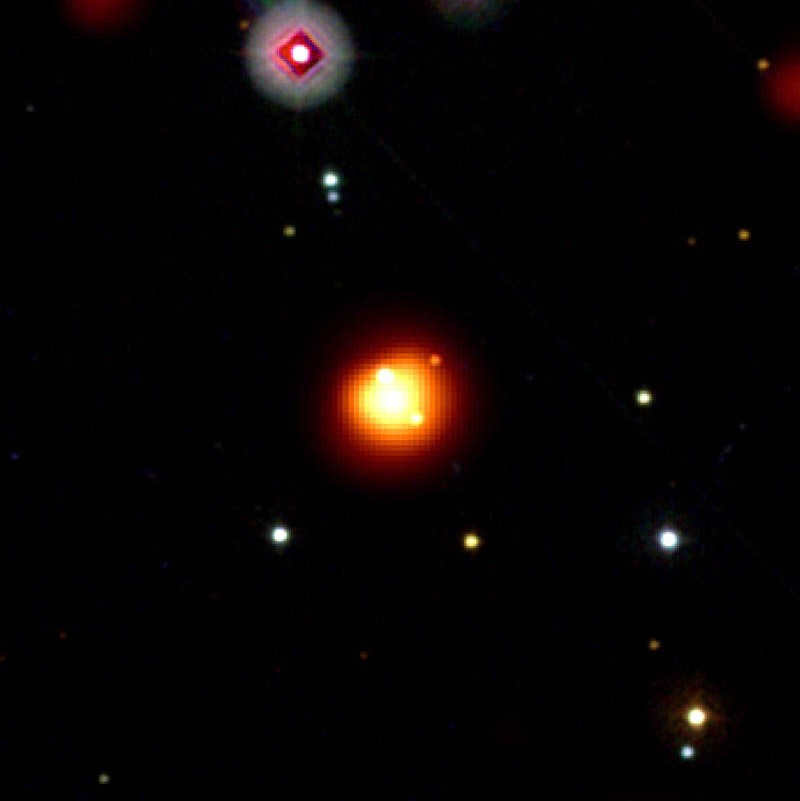
Supernova GRB 080913.
Hypernovae are remarkable because they are responsible for perhaps the most energetically intense and rarest phenomena in the entire Universe – gamma-ray bursts. Gamma-ray bursts can last anywhere from a fraction of a second to several hours, but typically they only endure for one or two seconds. In those brief moments, they release a staggering amount of energy, equivalent to the total amount of energy that the Sun emits over its entire 10 billion year lifespan! The true nature of gamma-ray bursts still remains largely unknown.
Despite their cataclysmic nature, supernovae can rightfully be called the creators of life in the Universe. The force of their explosion propels the interstellar medium to create gas-dust clouds and nebulae, which eventually give birth to stars. Another notable characteristic is that supernovae enrich the interstellar medium with heavy elements.
It is supernovae that produce all chemical elements heavier than iron. As mentioned earlier, the synthesis of such elements requires the expenditure of energy. Only supernovae have the ability to “energize” the compound nuclei and neutrons necessary for the energy-intensive creation of new elements. The kinetic energy of the explosion disperses them throughout space along with the elements formed within the core of the exploded star. These elements include carbon, nitrogen, oxygen, and other essential components for organic life to exist.
Supernova observation
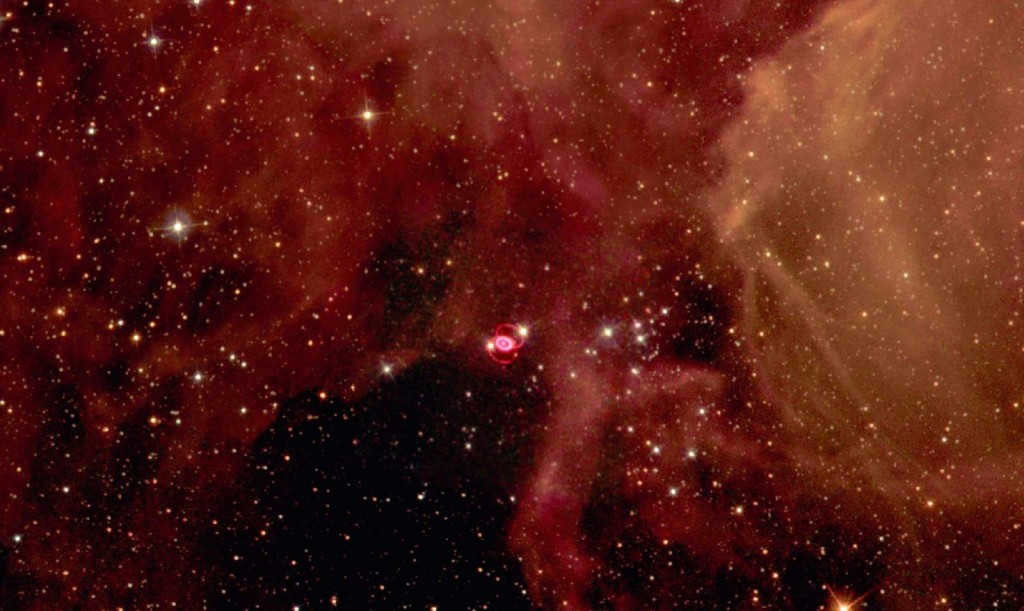
Supernova explosions are incredibly rare events. In our galaxy, which is home to over a hundred billion stars, only a few eruptions occur per century. According to historical records and medieval astronomical sources, there have been only six supernovae visible to the naked eye in the past two thousand years. Modern astronomers have never directly observed supernovae in our galaxy. The closest one occurred in 1987 in the Large Magellanic Cloud, a satellite galaxy of the Milky Way. Every year, scientists witness up to 60 supernovae happening in other galaxies.
The reason why supernovae are typically observed only during the outburst is because they are very rare occurrences. The events leading up to a supernova are rarely witnessed, which contributes to the overall mystery surrounding these cosmic explosions. Scientists have not yet developed the ability to accurately predict when a supernova will occur. It takes millions of years for a candidate star to reach the point of eruption. One particularly intriguing star in this context is Betelgeuse, which has the potential to illuminate the Earth’s sky for generations to come.
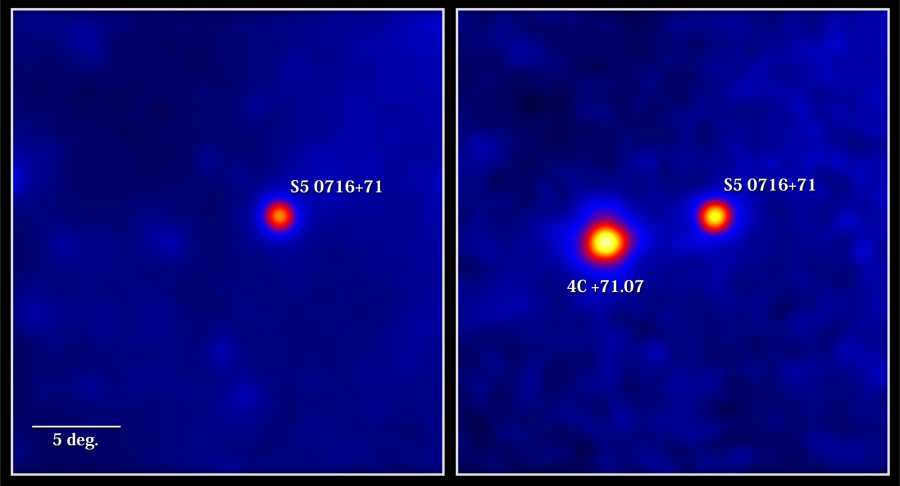
A gamma-ray flare has occurred in the galaxy 4C 71.07.
Hypernova explosions are extremely uncommon. In our galaxy, this phenomenon only occurs once every few hundred thousand years. However, the occurrence of gamma-ray bursts caused by hypernovae is nearly a daily observation. These bursts are so incredibly intense that they can be detected from virtually any location in the Universe.
Take, for instance, a gamma-ray burst that was situated 7.5 billion light-years away. This extraordinary phenomenon was observable to the naked eye. Arising within the Andromeda galaxy, the Earth’s atmosphere was briefly illuminated by a star that emitted light with the intensity of a full moon. If this event had taken place on the opposite side of our galaxy, a second sun would have materialized in the Milky Way! Astonishingly, the luminosity of the burst is trillions of times greater than that of the Sun and millions of times brighter than our entire galaxy. Considering the fact that there are billions of galaxies throughout the Universe, it is no surprise that such occurrences are documented on a daily basis.
Effects on our planet
It is highly improbable that supernovae could pose a danger to modern humanity or have any direct impact on our planet. Even if Betelgeuse were to explode, it would only illuminate our skies for a brief period of time. However, they have certainly had a significant influence on us in the past. One notable example is the initial occurrence of one out of five mass extinctions on Earth, which took place 440 million years ago. According to a particular hypothesis, this extinction event was triggered by a gamma-ray burst within our Galaxy.
What is even more fascinating is the distinct role that supernovae play. As mentioned earlier, it is supernovae that generate the chemical elements necessary for the development of carbon-based life. Earth’s biosphere is no exception. The solar system came into existence within a gas cloud that contained remnants of previous supernova explosions. It turns out that we all owe our existence to supernovae.
Resources on the subject
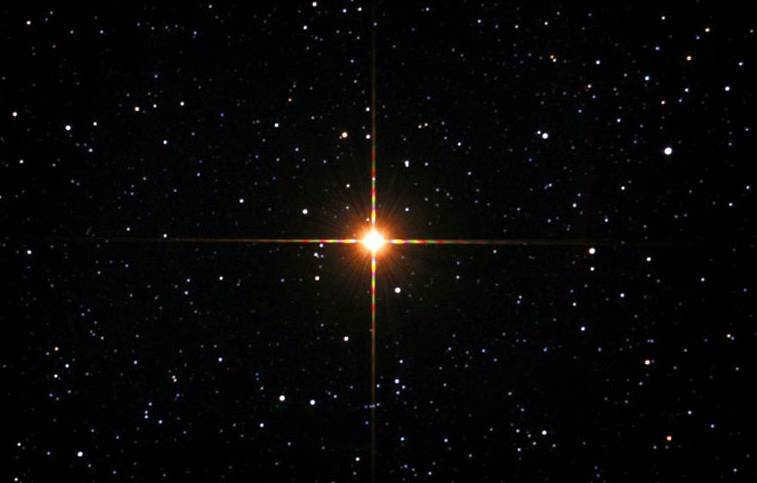
In addition, supernovae have had a profound impact on the development of life on our planet. By raising the levels of radiation, these cosmic explosions have compelled organisms to undergo genetic mutations. Furthermore, we must not overlook the significant role that supernovae have played in causing major extinctions. Undoubtedly, these celestial events have frequently reshaped the Earth’s biosphere. Without these cataclysmic extinctions, the dominant species on Earth would be entirely different today.
The magnitude of stellar explosions
In order to gain a clear comprehension of the power behind supernova explosions, we can refer to the equation of mass and energy equivalence. This equation states that each gram of matter holds an immense quantity of energy. Therefore, one gram of matter is equal to the detonation of an atomic bomb over Hiroshima. The energy produced by a sovereign bomb is equivalent to three kilograms of matter.
During thermonuclear processes in the Sun’s core, approximately 764 million tons of hydrogen undergo a transformation into 760 million tons of helium every second. This means that the Sun emits energy equal to 4 million tons of matter every second. However, only a minuscule fraction, about one two-billionth, of the Sun’s total energy actually reaches the Earth, which is equivalent to just two kilograms of mass. This fact has led to the speculation that the detonation of the Tsar Bomba, the most powerful nuclear bomb ever created, could potentially be witnessed from Mars. Interestingly, the Sun provides several hundred times more energy to Earth than the total energy consumed by humanity. In other words, it would only take a few tons of matter to be converted into energy in order to meet the annual energy requirements of the entire modern human population.
So many variations of supernovae
The term “supernova” should not only be limited to exploding stars. These occurrences are just as unique and varied as the stars that produce them. There is still much about these phenomena that science has yet to uncover.
Ewald Müller (Ewald Müller), Wolfgang Hillebrandt (Wolfgang Hillebrandt) and Hans-Thomas Janka (Hans-Thomas Janka) are affiliated with the Institute for Astrophysics of the Max Planck Society. They are based at Max Planck University in Garching, Germany, and also teach at the Technical University of Munich. Müller leads the group specializing in numerical and relativistic astrophysics. In 1993, together with Janka, he was honored with the Heinz Billing Prize for their groundbreaking work in utilizing computers for scientific research. Hillebrandt serves as co-director of the Institute of Astrophysics and focuses his research on nuclear astrophysics, stellar evolution, and supernova explosions. He was recognized by the German Physical Society in 1982 for his exceptional contributions to the field of nucleosynthesis through fast neutron capture. Janka’s research interests include the role of neutrinos in astronomy, evolution of neutron stars, supernovae, and gamma-ray bursts. Interestingly, shortly after he began working on his doctoral thesis, the discovery of supernova 1987A occurred, which greatly influenced his career trajectory and had a profound impact on our understanding of the universe as a whole.
Attempting to simulate the birth of a supernova has proven to be a challenging task. Until recently, all previous attempts at experimentation have been unsuccessful. However, despite these setbacks, astrophysicists have successfully managed to induce a stellar explosion.
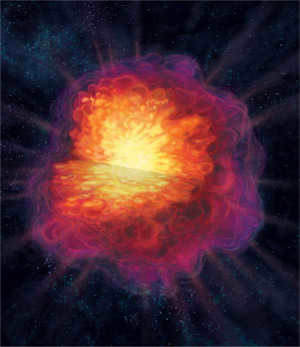

Ten seconds after the initial burst, the white dwarf is nearly consumed by the intense heat of the thermonuclear flames in this computer-generated model. The flames quickly propagate from the core outwards, triggering a nuclear chain reaction that converts carbon and oxygen (lilac and red) into silicon (orange) and iron (yellow). Previous models, lacking the ability to account for turbulent motions, failed to provide an explanation for why stars explode rather than quietly extinguishing (photo: www.sciam.ru).
Zwicky and his colleague Walter Baade (Walter Baade) proposed that the star obtains the necessary energy to explode through the force of gravity. According to their perspective, the star contracts until its core reaches the density of an atomic nucleus. The collapsing material can then release enough gravitational potential energy to expel its remnants outward. In 1960, Fred Hoyle (Fred Hoylefrom Cambridge University and Willy Fowler.Willy Fowlerat Caltech hypothesized that supernovae resemble a massive nuclear bomb. When a star similar to the Sun depletes its hydrogen and helium fuel, it transitions to utilizing oxygen and carbon. The fusion of these elements not only results in a substantial release of energy, but also generates radioactive nickel-56, the decay of which could account for the lingering glow of the explosion that persists for several months.
Both ideas turned out to be accurate. Some supernovae display no traces of hydrogen in their spectra (referred to as Type I); most seem to have undergone a thermonuclear explosion (Type Ia), while the remaining ones (types Ib and Ic) are the result of a collapsed star that has shed its outer hydrogen layer. Supernovae that contain hydrogen in their spectra (Type II) also arise from collapse. Both occurrences transform the star into an erupting gas cloud, and the gravitational collapse ultimately leads to the creation of an extremely dense neutron star or even a black hole. Observations, particularly of supernova 1987A (Type II), offer further support to the proposed theory.
Nevertheless, up to this point, the phenomenon of a supernova explosion continues to present a significant challenge within the realm of astrophysics. Computer simulations struggle to accurately replicate this extraordinary event. The process of triggering a star to explode is an inherently intricate task, as stars are inherently self-regulating entities that maintain stability over millions and billions of years. Even as these celestial luminaries approach the end of their lifespan, they possess mechanisms for fading away rather than undergoing an explosive demise. The accurate reproduction of such an explosion necessitates the utilization of multidimensional models, which, until recently, exceeded the computational capacities of available computers.
Overview: supernovae
- Stars are expected to die quietly, but some of them explode as supernovae at the end of their lives. This phenomenon is one of the most complex in astrophysics.
- Theorists have made gradual improvements to their models and have recently been able to explain the two main types of supernovae. The challenge was to incorporate all three spatial dimensions in order to accurately replicate the dynamics of turbulent flows.
- It has been discovered that the explosion can be highly asymmetric, scattering the remnants of the star (including newly formed chemical elements) in various directions. If a neutron star is formed as a result, it could be propelled and travel across the galaxy.
Explosion is a challenging task
White dwarfs, which are the remnants of sun-like stars, slowly lose their energy and diminish. They have the capability to undergo a Type I supernova explosion.a. Nevertheless, as per Hoyle and Fowler’s findings, if a white dwarf orbits another star closely, it can attract and gather material from its companion, thereby augmenting its mass, central density, and temperature to the extent where a detonation caused by the fusion of carbon and oxygen becomes feasible.
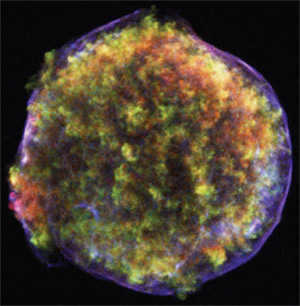
Tycho Brahe, the well-known Danish astronomer, witnessed the extraordinary event of the Tycho supernova in 1572. This thermonuclear explosion resulted in the formation of luminous clouds composed of silicon, iron, and various other heavy elements that emit X-rays. The expanding shock wave, depicted as a thin blue shell, is rapidly spreading at a speed of 7500 km/s. The captivating image of this phenomenon can be seen at www.sciam.ru.
Thermonuclear reactions in stars are similar to regular fires, with the combustion front spreading throughout the star and leaving behind a residue of “nuclear ash,” mainly nickel. These fusion reactions occur in a small volume, primarily in a thin layer on the surface of bubbles filled with the “ash,” which are located deep within the white dwarf. Due to their low density, these bubbles may rise to the star’s surface. However, as the star expands and cools, the release of energy extinguishes the thermonuclear flame, unlike in a conventional bomb. Stars lack a shell to contain their volume, and reproducing a supernova explosion in a laboratory is impossible; it can only be observed in space. To study this phenomenon, our team conducted an extensive simulation using the IBM p690 supercomputer. The star’s numerical model was represented by a computational grid with 1024 elements on each side, enabling resolution of details as small as several kilometers. Each computational grid required over 10^20 arithmetic operations, a task only achievable by a supercomputer performing over 10^11 operations per second. In total, the simulation took almost 60 processor-years. Despite the complexity of particle physics, nuclear physics, fluid dynamics, and relativity theory, which all play a role in supernovae, various computational techniques used in other scientific fields cannot be applied due to the asymmetry, extreme conditions, and vast spatial and temperature ranges involved.
Thermonuclear supernova
- A thermonuclear supernova is a type of Type I supernova, which occurs when a star undergoes a sudden nuclear detonation.
- When a solar-type star, larger in mass, has depleted its fuel, it transforms into a white dwarf.
- The white dwarf then attracts and captures the gas released by its neighboring star, gradually approaching its critical mass.
- As the white dwarf reaches critical mass, a “flame” of uncontrollable nuclear reactions is ignited within its turbulent core.
- This flame rapidly expands outward, converting carbon and oxygen into nickel.
- Within a matter of seconds, the white dwarf is completely obliterated. In the following weeks, the radioactive nickel undergoes decay, resulting in the glowing remnants of the star.
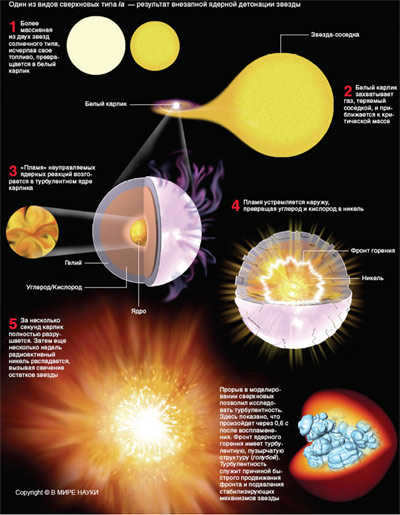

Advancements in supernova modeling have unlocked the ability to explore turbulence. This depiction showcases the events that unfold 0.6 seconds after ignition. The nuclear combustion front possesses a turbulent and frothy structure (depicted in blue). Turbulence serves as the catalyst for the rapid progression of the front and the suppression of the star’s stabilizing mechanisms (Image: www.sciam.ru)
Unveiling the Mechanics
An unlikely source shed light on the solution – the study of the inner workings of a car engine. The interaction between gasoline and oxygen, combined with their ignition, generates turbulence, which in turn enhances the combustion surface by vigorously distorting it. Simultaneously, the rate of fuel combustion, which is directly proportional to the combustion area, increases. However, turbulence is also present in stars. Gas streams within a star travel vast distances at high velocities, causing even the slightest disturbances to transform a tranquil flow into a turbulent one. In the case of a supernova, the eruption of scorching bubbles would agitate the matter, leading to the rapid spread of nuclear combustion. This process occurs so quickly that the star is unable to restructure itself and extinguish the flames.
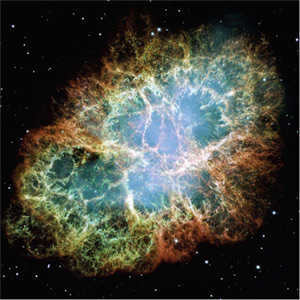

The Crab Nebula is the gas remnant of a core-collapse supernova that was observed exploding in 1054. Located at the center is a neutron star (indicated by the arrow) that emits particles, resulting in the glowing gas (blue). The outer fibers consist mostly of hydrogen and helium from the collapsed massive star (photo: www.sciam.ru).
The gravitational resting place
Explaining another type of supernovae, which occur due to the collapse of a stellar core, is a more challenging task. From an observational standpoint, these supernovae exhibit a greater diversity compared to thermonuclear supernovae. Some contain hydrogen while others do not, some explode within a dense interstellar medium while others in nearly empty space, and some release significant amounts of radioactive nickel while others do not. There are also variations in ejection energies and expansion rates. The most powerful among them not only result in a classical supernova explosion but also a prolonged gamma-ray burst (refer to: Gehrels N., Leonard P. and Piro L. Brightest explosions in the Universe // VMN, No. 4, 2003). The heterogeneity of these properties remains one of the many mysteries. Core-collapse supernovae are considered as potential sources for the creation of heavy elements like gold, lead, thorium, and uranium, which can only be formed under specific conditions. However, it is uncertain whether these conditions actually occur when a star’s core undergoes a collapse. Although the concept of collapse may seem simple (the compression of the core releases gravitational binding energy, which ejects the outer layers of matter), comprehending the process in detail is challenging. Towards the end of a star’s life, when its mass exceeds 10 solar masses, it develops a layered structure with progressively heavier elements appearing at greater depths. The core mainly consists of iron, and the star’s equilibrium is maintained by the quantum repulsion of electrons. Eventually, the star’s mass overwhelms the electrons, causing them to be pushed into the atomic nuclei where they react with protons to form neutrons and electron neutrinos. Consequently, the neutrons and remaining protons are compressed against each other until their own repulsive force counteracts the collapse. At this stage, compression ceases and is replaced by expansion. Matter pulled inward by gravity starts to flow partially outward. According to classical theory, this issue is resolved by a shock wave that occurs when the star’s outer layers collide with the core at supersonic speeds, causing the core’s compression to abruptly slow down. The shock wave propagates outward, compressing and heating the encountered matter while losing energy, eventually dissipating. Modeling suggests that the energy from compression dissipates rapidly. So, how does the star then explode? The initial attempt to solve this problem was made by Stirling Colgate (Stirling Colgateand Richard White.Richard White) in 1966, and later followed by computer models created by Jim Wilson.Jim Wilson. These efforts took place in the early 1980s when all three were working at the Lawrence Livermore National Laboratory. They proposed that the shock wave is not the sole source of energy transfer from the core to the star’s outer layers. Neutrinos, which are born during the collapse, might play a supplementary role. At first, this idea may seem peculiar since neutrinos are known for their extreme inactivity and weak interaction with other particles, making them challenging to detect. However, in a collapsing star, they possess sufficient energy to initiate an explosion and interact effectively with matter at extremely high densities. Neutrinos heat the layer surrounding the collapsing core of the supernova, thereby maintaining the pressure within the collapsing shock wave.
A supernova caused by the collapse of a star’s core
- Supernovae of various types are formed when stars with masses exceeding 8 solar masses undergo compression. These types are classified as Ib, Ic, or II, depending on their observed features.
- At the end of its life, a massive star possesses a layered structure composed of different chemical elements.
- Iron, which is not involved in nuclear fusion, does not generate any heat in the core. As a result, gas pressure decreases, causing the overlying matter to rush downwards.
- In an instant, the star’s nucleus collapses and transforms into a neutron star. The falling matter rebounds off the neutron star’s surface, creating a shock wave.
- Neutrinos rapidly escape from the newly formed neutron star, irregularly propelling the shock wave outward.
- The shock wave propagates through the star, tearing it apart.
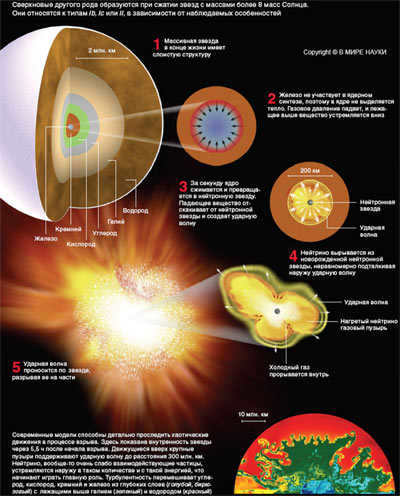

Like a rocket
However, does that additional boost provide sufficient momentum to sustain the surge and accomplish the detonation? The results of computer simulation indicated that it was insufficient. Despite the fact that the gas both absorbs and emits neutrinos, the simulations demonstrated that the losses prevail, resulting in the failure of the explosion. Nevertheless, there was one assumption made in these simulations: they considered the star to possess spherical symmetry. Consequently, they disregarded multidimensional phenomena such as convection and rotation, which play a significant role because the observed supernovae generate a highly irregular, “chunky” remnant.
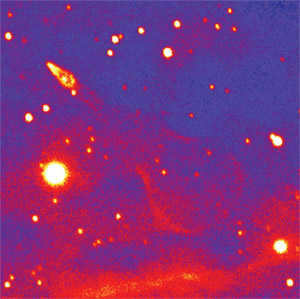

The Guitar Nebula represents a shock wave that is diverging from a neutron star (indicated by the arrow) and is being propelled through the gas at a speed of 1600 km/s. In order to transfer such velocity to the star, the explosion must exhibit a high degree of asymmetry (photo: www.sciam.ru).
Multidimensional modeling reveals that neutrinos in the vicinity of the supernova core heat up the plasma, leading to the formation of bubble-like structures and mushroom-shaped flows. The energy from convection is transferred to the shock waves, propelling them upward and causing an explosion. As the blast wave slows down, the hot expanding plasma bubbles merge with the downward flowing cold matter, resulting in the formation of one or more bubbles surrounded by downward streams. This asymmetric explosion can also be influenced by the deformation of the retarded shock wave, which takes on an hourglass shape. Additionally, when the shock wave passes through the inhomogeneous layers of the supernova ancestor, it mixes the chemical elements synthesized during the star’s lifetime and the explosion. The remnants of the star mostly fly off to one side, while the neutron star at the center moves in the opposite direction, similar to a skateboard bouncing backwards when you jump off it. Our computer model shows that the neutron star bounces at a speed of over 1000 km/s, consistent with the observed motion of many neutron stars. However, some neutron stars move slower, possibly due to the incomplete merging of the bubbles during the explosion. These various phenomena can be attributed to a single basic effect. Despite recent advancements, none of the existing models fully capture the range of phenomena associated with supernova explosions and involve simplifications. A comprehensive model would require seven dimensions: space (three coordinates), time, neutrino energy, and neutrino velocity (described by two angular coordinates). Furthermore, this model should consider all three types, or flavors, of neutrinos. However, it is worth considering alternative mechanisms that could trigger the explosion. For example, the magnetic field could intercept the rotational energy of a newly formed neutron star and provide a new impetus to the shock wave. This magnetic field would also cause the matter to be squeezed outward along the rotation axis, generating two polar jets. These effects could explain the most powerful explosions, such as gamma-ray bursts associated with near-light-speed jets. It is possible that the cores of such supernovae collapse into black holes rather than neutron stars. While theorists continue to refine their models, observers are exploring the use of not only electromagnetic radiation but also neutrinos and gravitational waves. The collapse of a star’s core, its implosion at the start of the explosion, and its eventual transformation into a black hole not only result in the emission of intense neutrinos but also disrupt the structure of space-time. Unlike light, which is unable to penetrate the layers above, these signals originate directly from the bubbling inferno at the center of the explosion. Neutrino and gravitational wave detectors that have been recently developed may provide insights into the mysteries of stellar death.
Speculators have pondered the reason behind neutron stars propelling through the Milky Way at incredible velocities. Innovative simulations of core-collapse supernovae present a theory rooted in the innate irregularity of these cataclysmic events.
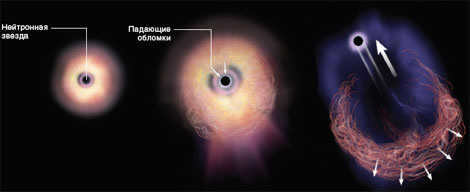
| The newly formed neutron star located at the center of the initial explosion is almost calm | The gravitational force of the uneven ejection causes the neutron star to move in a specific direction, while the matter that falls onto the star provides it with an additional push | These forces result in the ejection of the neutron star. (According to the law of conservation of momentum, the neutron star moves away in the direction from which the matter falls onto it.) |
Simulation demonstrates that asymmetry emerges early in the explosion. Minor discrepancies during the collapse of the star give rise to significant variations in the level of asymmetry
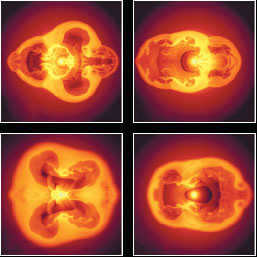

These variations, in turn, are reflected in the varying velocities of neutron stars. By comparing the predicted velocities with the observed ones, the models can be tested.
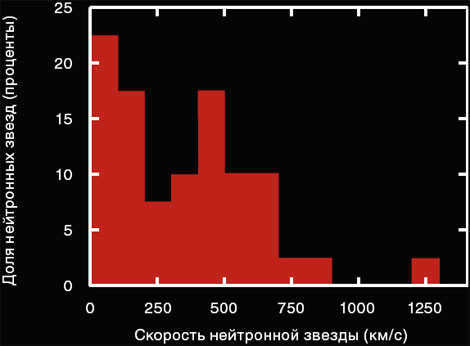

- Bisnovatyi-Kogan G.S. Physical inquiries of the hypothesis of stellar evolution. Moscow: Nauka, 1989.
- Hoffmeister K., Richter G., Wenzel W. Variable Stars. M.: Nauka, 1990.
- De Jager K. Stars of the Highest Luminosity. M.: Mir, 1984.
- Kaplan S.A. Physics of Stars. M.: Nauka, 1977.
- Pskovsky Y.P. New and Supernovae Stars. M.: Nauka, 1985.
- Shklovsky I.S. Supernovae Stars and Related Problems. M.: Nauka, 1976.
- Supernova Explosions in the Universe. A. Burrows in Nature, Vol. 403, pages 727-733; February 17, 2000.
- Full-Star Type Ia Supernova Explosion Models by F.K. Röpke and W. Hillebrandt in Astronomy and Astrophysics, Vol. 431, No. 2, pages 635-645; February 2005
- The Physics of Core-Collapse Supernovae by S. Woosley and H.-Th. Janka in Nature Physics, Vol. 1, No. 3, pages 147-154; December 2005
- Multidimensional Supernova Simulations with Approximative Neutrino Transport by L. Scheck, K. Kifonidis, H.-Th. Janka, and E. Müller in Astronomy and Astrophysics (in press)
taras 28.10.2017 14:39 Reply
What type of star is only a few thousand kilometers in diameter? Is it acceptable that the Earth is larger? And if it takes 10^20 steps, at a rate of 10^11 operations per second, it would take a billion seconds. That is over 31 years. There is no way the entire calculation can be completed within 60 years. Next, 10^20 operations with over a billion cells? It is not difficult to believe that it is even possible. However, it would be interesting to know how. If you were to solve a system head-on with a billion equations and a billion unknowns, you would need more than 5*10^26 operations. Is your matrix sparse? By the way, where did you acquire such a powerful computer in 1957? In the 1990s, a supercomputer with 3*10^10 operations per second was considered groundbreaking, and in the first generation, the standard was 3*10^3 operations per second. It would have been impossible to cluster a hundred million machines in 1957. Additionally, gigabyte memory did not exist even in 1967, so even if you allocated only one byte per cell and left no bytes for the application or system, there would be no space to store such an array. If we assume that the years refer to the processor’s work, for example, with six processors, the entire machine would work for 10 years, and with three processors, it would work for 20 years, the calculations do not add up at all. Let’s say the machine has two processors. The performance is specified for the entire machine. Therefore, the entire machine would take 31 years to complete one step of the main cycle. This would already be 62 processor-years, which is more than 60. With three processors, 93 processor-years would pass in 31 years. And so on. The more processors there are, the more processor-years are required for a given time, and the time for one step is determined by the speed of the entire machine. If not all processors work all the time, then some of the time is slower. And the 31st year is no longer sufficient for one step of the main cycle. It is not exactly 31 years either. Therefore, 60 years of CPU time is not possible in any case. That leaves 60 years of machine time, i.e., 60 years for the entire computer. However, such computers did not exist even 20 years ago. And 50 years ago, there were no computers capable of even solving this problem. And you complain about the inapplicability of simplification methods while also mentioning “gates” in which the full matrix does not fit, even for a problem with one unknown per element of your massive array. You can only fit a billion unknowns into 10^20 operations by utilizing the sparsity of the matrix, even if it is implicit. The problem lies not in the suboptimality of the Gauss method, but in the connections between each unknown and the need to consider them all. This results in 618 970 019 642 690 137 449 562 112 subtractions and 618 970 020 219 150 890 826 727 424 divisions/multiplications. This does not fit into 10^20, no matter how hard I try. And this is assuming that the influence of each element on every other element is linear and the coefficients are already loaded. But in reality, you would also have to calculate them.
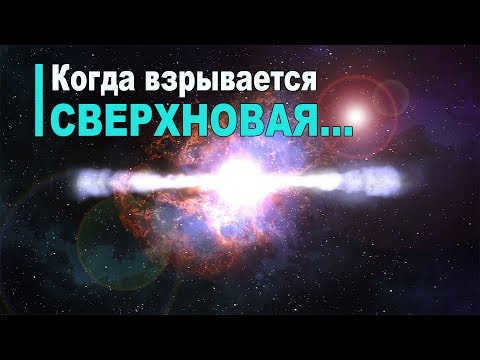
The primary contrast: Nova versus Supernova
Nova and Supernova are two different cosmological events that occur in the universe. Novae are considerably less powerful explosions when compared to supernovae. A nova results from an uncontrolled nuclear reaction in which hydrogen nuclei combine to form helium. In contrast, a supernova is a catastrophic explosion that produces elements heavier than iron and nickel. Following the explosion of a new star, the white dwarf gradually reverts to its original state. However, after a supernova explosion, the remaining matter becomes a black hole or neutron star. This represents the key distinction between a nova and a supernova.
What is a nova?
The basic definition of the Latin term “nova” is “new”. However, in the scientific field, novae are not actually new stars, even though they may appear to be stars for a brief period.
A sudden increase in the brightness of a white dwarf is known as a nova. Typically, a nova occurs in a binary system where the white dwarf is paired with either a main sequence star or a smaller white dwarf. When the white dwarf has accumulated enough matter, its gravitational pull causes it to strip hydrogen from its companion star as they orbit each other. The extracted hydrogen gas becomes compressed under the intense gravity of the white dwarf. If the pressure and temperature reach a critical point, the hydrogen undergoes fusion, resulting in a rapid release of energy in a thermonuclear explosion known as a nova. This explosion causes the white dwarf to suddenly become much brighter. A typical nova explosion can emit the energy equivalent of several thousand suns. However, over time, the brightness of the white dwarf gradually fades.
Scientists have discovered a different kind of phenomenon known as Helium new. According to their research, a helium nova occurs when the helium shell of a white dwarf star explodes. It is important to note that a helium nova is distinct from a traditional nova, which is caused by hydrogen fusion reactions.
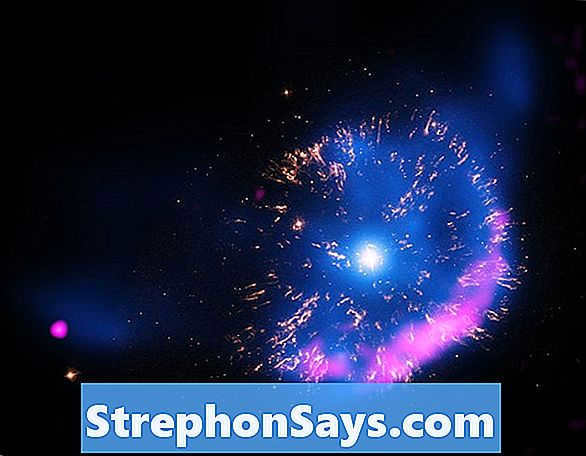
A Brief Explanation of Supernovae
Supernovae are extraordinary astronomical phenomena that take place within our vast universe. Aside from their awe-inspiring power, they also serve as cosmic factories for heavy elements. These cosmic events are generally classified into two main types: Type I and Type II.
Type I supernovae bear some resemblance to newborn stars. These white dwarfs gradually accumulate matter from nearby celestial bodies. As a result, they experience a rapid internal collapse due to their own powerful gravitational forces, ultimately leading to a cataclysmic explosion. Depending on their spectroscopic characteristics, Type I supernovae can be further divided into three subcategories: Type Ia, Ib, and Ic.
A type II supernova occurs when a massive star depletes its fuel. In the early stages of the star’s life, hydrogen nuclei undergo fusion with helium. If the star’s temperature and density are sufficient after the main fuel, or hydrogen, is exhausted, the fusion process continues with helium nuclei fusing with carbon and oxygen at the core. This series of thermonuclear reactions gradually expands from the core to the outer layers, ultimately resulting in the formation of heavy elements like iron and nickel. When the core’s mass surpasses the Chandrasekhar limit, a sudden collapse (explosion) occurs, leading to a sharp increase in temperature and density. Eventually, the star reaches its final stage, creating a supernova explosion. Supernovae are the most powerful explosions in the universe, releasing vast amounts of energy and ejecting substantial quantities of matter, including heavy elements. Physicists consider supernovae to be a significant source of heavy elements, such as uranium.
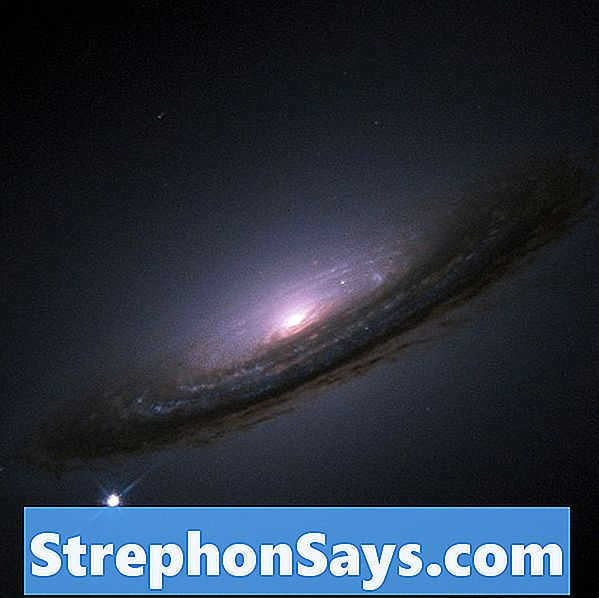
The distinction between a Nova and a Supernova
Plurals:
A new star: Fresh stars or novae.
Supernova: Exploding stars or supernovae.
Subclassifications:
New star: Novae can be categorized based on their brightness patterns.
Supernova: Supernovae can be categorized based on their spectral lines.
Explosion intensity:
Nova star: A nova can emit light thousands of times brighter than the sun.
Supernova: A supernova has the ability to overshadow the entire galaxy.
Thermonuclear fusion:
New star: When hydrogen nuclei combine with helium nuclei, a new star is formed.
Supernova: Supernovae play a significant role in the creation of heavy elements like uranium and silver.

